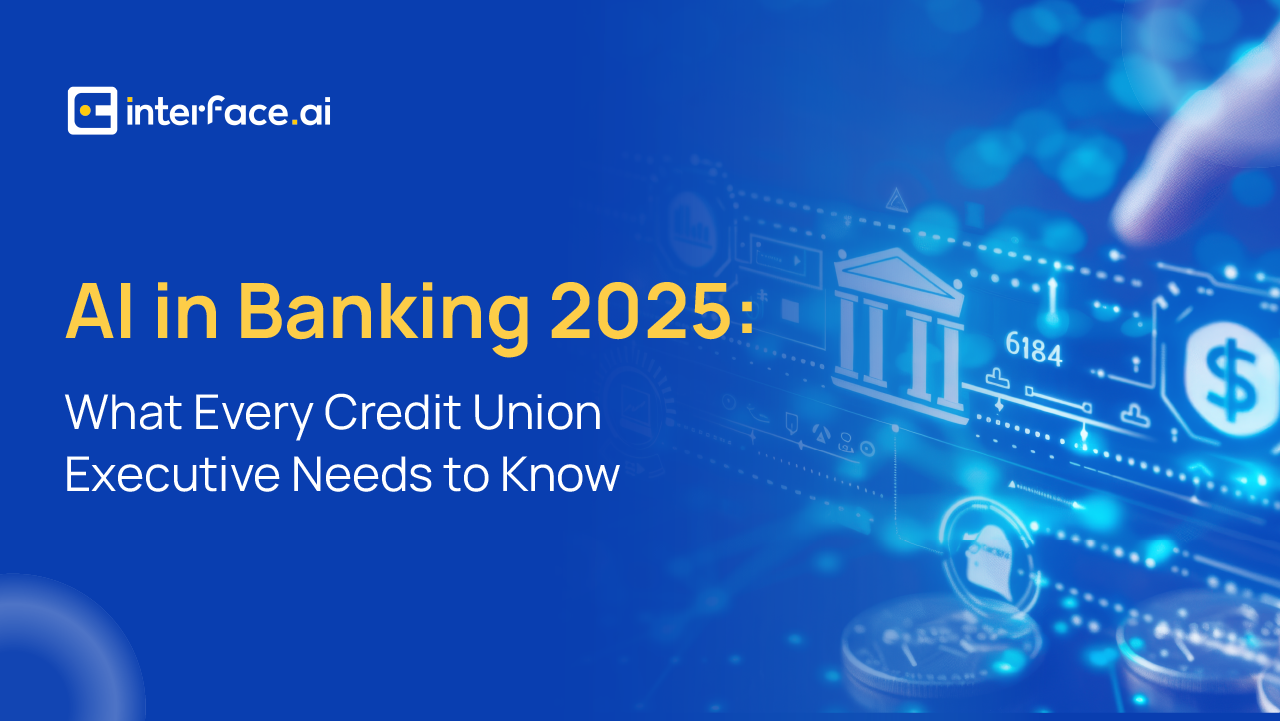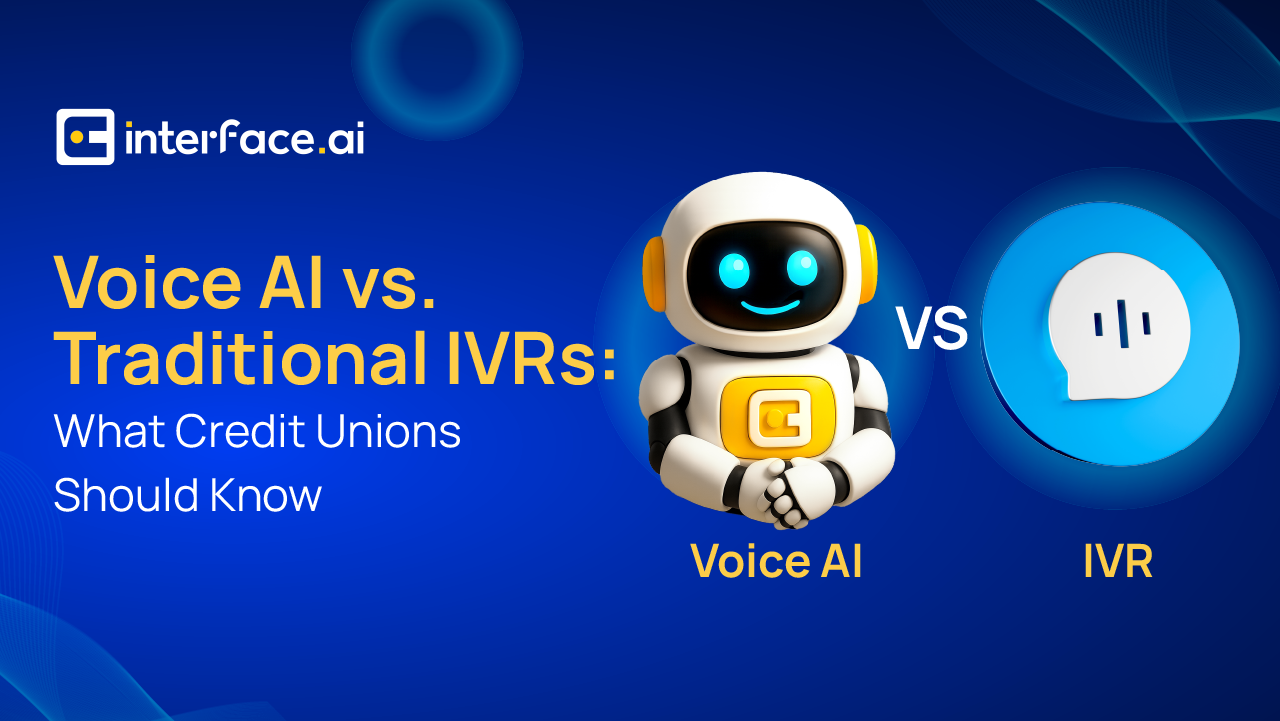
AI in Banking 2025: What Every Credit Union Executive Needs to Know
In 2025, AI isn’t just shaping the future of banking – it’s defining who wins in the market. For credit unions, staying competitive means more than keeping pace with digital trends. It requires bold leadership that embraces AI as a catalyst for growth, member loyalty, and operational excellence.
Today’s members demand instant, intelligent, and deeply personalized service – anywhere, anytime. To meet this rising bar, credit union leaders must integrate AI across every layer of their operations – from the contact center and fraud prevention to back-office automation and proactive member engagement.
In this blog, we spotlight five AI-driven trends that every credit union executive needs on their radar in 2025 – and why acting on them now is a strategic imperative, not just a technological choice.
1. Frictionless digital support redefines member service
With a growing demand for fast, digital-first service, the use of AI in banking is helping credit unions deliver real-time support across all channels. Whether through phone or digital chat, AI is now the first point of contact for most member interactions.
Voice AI and Chat AI solutions offer intelligent self-service that mimics human interaction while improving speed and accuracy. These tools manage everything from balance inquiries and loan applications to dispute resolution, freeing up human agents for higher-value tasks.
Why it matters:
- Reduces call center costs by up to 40%
- Increases resolution speed and member satisfaction
- Supports 24/7 member service without additional headcount
According to a 2024 Bain & Company report, the use of AI in customer support can reduce adviser response time by up to 35% and improve result quality by up to 40%.- a figure that continues to climb in 2025, accelerating the adoption of AI in banking.
2. AI-driven personalization powers cross-sell opportunities
Members today expect more than responsive service – they want personalized financial guidance. AI enables this by leveraging data from multiple sources to create real-time member insights.
With Employee AI, frontline staff are empowered with predictive insights into member behavior. These insights highlight opportunities for cross-selling or upselling relevant products – such as suggesting a high-yield savings account to a member with idle funds or recommending a loan prequalification.
How it helps:
- Boosts product adoption through personalized suggestions
- Enhances relationships with contextual engagement
- Drives more revenue per member without extra outreach
These are practical examples of AI in banking where intelligent solutions directly influence revenue growth and member satisfaction.
3. Strengthened fraud detection through smart AI models
As fraud becomes more sophisticated, legacy rule-based systems are no longer enough. A KPMG report found 76% of financial institutions prioritize GenAI for fraud detection, and 83% plan to increase GenAI investments by 50% or more.
interface.ai’s Fraud Prevention AI provides real-time protection through behavioral biometrics, transaction pattern recognition, anomaly detection, and device biometrics – the industry’s first AI-native approach to device-based authentication.
This represents a powerful case of fraud detection using AI in banking, where AI doesn’t just respond to risk – it anticipates and neutralizes it in real time.
What it delivers:
- Real-time anomaly detection and risk scoring
- Reduction in fraud loss exposure
- End-to-end fraud protection from login to transaction
4. Back-office automation with human-like efficiency
Operational inefficiencies can erode member satisfaction and increase costs. AI now plays a vital role in automating critical workflows such as document verification, KYC checks, compliance, and loan decisioning.
Paired with Employee AI, internal teams gain access to contextual member data, AI-generated insights, and process automations that dramatically reduce turnaround times and errors.
Key advantages:
- Speeds up back-office processes from days to minutes
- Reduces manual workload and administrative costs
- Frees staff to focus on high-impact, member-facing tasks
The adoption of AI in banking for operational efficiency has shifted from optional to essential in 2025.
5. The rise of agentic AI in banking in member journeys
Agentic AI in banking marks the next evolution of self-service – one where AI takes action proactively, not just reactively. From analyzing transaction trends to making payment suggestions and optimizing savings strategies, these systems act as intelligent digital companions.
Forward-thinking credit unions are already leveraging Agentic AI to support members throughout their financial journeys, increasing engagement and deepening trust.
Potential outcomes:
- Proactively anticipates and meets member needs
- Improves financial wellness through intelligent nudges
- Builds loyalty by enhancing daily financial decision-making
Wrap-up: A strategic imperative, not just a trend
AI in banking is shaping everything from how credit unions serve members to how they operate internally. Whether it’s fraud mitigation, member engagement, or process automation, AI is becoming the essential engine of transformation in 2025.With cutting-edge tools like Voice AI, Chat AI, and Employee AI, credit unions can modernize operations, strengthen member trust, and deliver future-ready experiences.
Want to go deeper?
Download our exclusive Credit Union AI Trend Report to explore real-world AI use cases, adoption data, and proven strategies from industry leaders.
AI Insights for Credit Union & Community Bank Leaders
Join the monthly newsletter for all the latest industry updates

